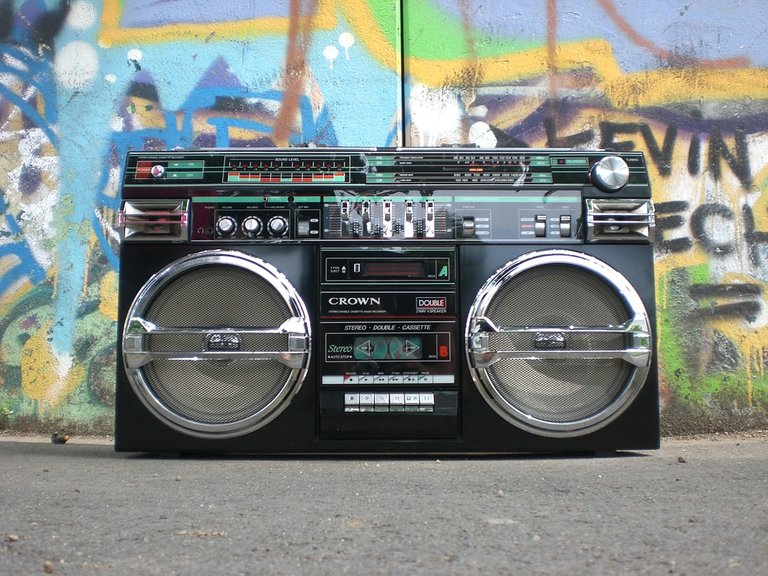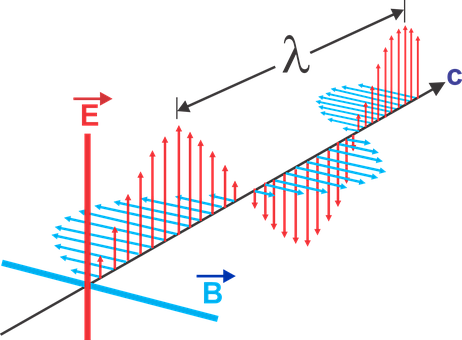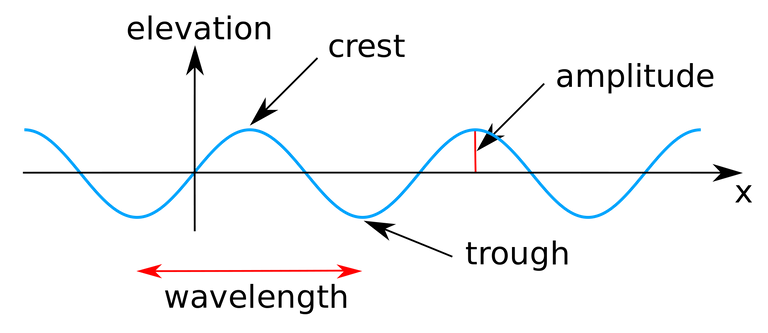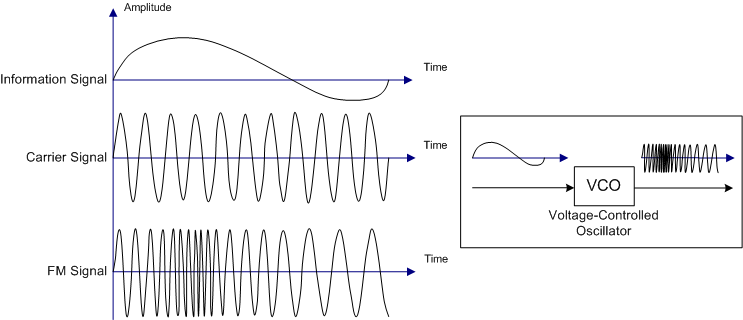Indomie Generation and the Boom Box Story
You would not know just how old you are until you raise certain topics. This happens to me all the time. Most of the things I consider normal parts of life are now ancient. For instance, in Nigeria, the word Indomie did not mean anything to an average child before 1995. These days, all they eat is Indomie noodles. Indomie Generation! The story that led to this post happened sometime before the advent of the indomie generation.
It was 1993 and boom box was a thing. Mekus came home from the city late in the night as he did every year to celebrate Christmas with his aged grandmother. Of course, there was no electricity so his boom box was battery powered. He came in with a couple of friends and they were all in the mood for a party. Luckily for him, the FM station was in a party mood too, so he played his boom box at the highest volume all night.

His aged grandmother had never seen a thing like that. She did not understand the music but she could tell that her grandson and his friends enjoyed it. Very early in the morning, she woke them up with a knock on Mekus's room. In her hands she carried a big bowl of jollof rice and meat. Mekus expressed his surprise at the ridiculously large amount of food she had brought them.
"Those musicians that played all night should eat breakfast too, shouldn't they?" she asked.
The Magic of Electromagnetic Waves Continues
In my last post, I tried to discuss the basics of electromagnetics and I mentioned how the discovery of electromagnetics led to many awesome technological applications. If you would like to read that post, you can find it here. Basically, what was written there is simple: If you shake an electrically charged body, you would generate electromagnetic waves which wavelength would be determined by how fast you shake it. Excellent.
Radio Waves
Radio waves are electromagnetic waves that have wavelengths longer than infrared light and appears at the beginning of the spectrum with frequencies ranging from 1 to 3GHz. Between infrared and visible light, there is microwave which some regard as frequencies between 3GHz and 300GHz. Some experts class the frequencies from 1GHz to 300GHz as frequency band for radio.
At 300 GHz, the corresponding wavelength is 1 mm (0.039 in), and at 3 kHz is 100 km (62 mi). Like all other electromagnetic waves, they travel at the speed of light. [1]
Radio waves are used for a variety of applications including fixed and mobile radio communication, radar (that stuff traffic policy uses to know how fast you were driving) and a bunch of other navigation systems.
Radio waves are also responsible for satellite communications, wireless computer networks, radio broadcasts and innumerable other applications. As an oldie, it is not surprising that my interest lies in radio broadcast. Besides someone has to explain to Mekus's grandma how the music she heard all night came to be even without actual musicians being present.
General Properties of Electromagnetic Waves
In electromagnetic theory, it was established that the electric component of an electromagnetic wave occurs perpendicular to the magnetic component as shown below:

It turns out that these waves can be illiustrated mathematically using a known mathematical function. In basic math, we learned a little about waves. To illustrate the properties of a wave, the teacher would use what we knew as a sine wave.

It is clear from the image that a typical wave must have an Amplitude which is the height of the wave from the x-axis and is technically seen as a measure of change of a periodic variable over a single period. The Period is the the time or space it takes for the wave to repeat a pattern or to complete a cycle. The Wavelength is the distance from one trough to the next. The trough and crests are shown in the figure above. The Frequency is not apparent from the image shown but it is the inverse of the period and represents how fast the wave alternates. It is measure in cycles per second of Hertz (kHz, MHz and GHz representing higher order frequencies). Now that we got those out of the way, we are set to understand a few things about Radio Broadcasts.
Radio Broadcasting
Radio broadcasting has been around for a long time. Yeah, yeah, we have podcasts and ipods and everything in between but there are still situations where the only way to receive information over a long distance is through radio broadcasts and we Nigerians know all about that.
Amplitude Modulation (AM)
I knew about AM before my first Comm Tech class. AM is the means by which we received Voice of America(VOA) and BBC those days. However, we cannot adequately cover amplitude modulation without examining something else first.
Carrier Wave
It turns out that our voice, or audio signal is not as predictable as the sine wave like we earlier thought. In fact in telecommunication theory, it is said that the more predictable a wave is the less information it carries. Think about that for a minute, a signal without any variation in frequency and amplitude would hardly carry any information, would it? Anyway, our audio signal or voice or music that we want to transmit are not only unpredictable in frequency, they are also within a frequency band that could not be transmitted without the received signal being severely distorted and changed by noise.
Therefore, we use a carrier wave. A wave, carrier signal, or just carrier, is a waveform (usually sinusoidal waveform like the sine wave) that is modified with an input audio signal. In other words, we modify the carrier wave using the information we want to broadcast. The carrier wave usually has a much higher frequency than our audio signal. At these frequencies, the signal is not easily distorted. And because we know all the properties of our carrier wave, we can filter it out at the receiving end to obtain our original signal. This process of modifying a carrier wave with an input signal is called Modulation. The reverse which occurs at the receiver is called Demodulation. Excellent.
Having a clear understanding of what our carrier wave does, we can intuitively understand amplitude modulation as the process of modifying the amplitude of an input signal with a carrier wave of higher frequency so that we can transmit information to receivers without the information suffering distortion.
Unfortunately, most of the natural occurrence that distort signals (like thunder, noise) still affect amplitude modulated signals making them unsuitable for the broadcast of music or for purposes where high fidelity is required. In that case if our man Mekus had tuned his boom box to an AM radio station, the music would not have been clear enough to convince his grandmother that he had a live band in his room. So he must have been tuned to a different kind of radio station.
Frequency Modulation
Radio waves are generated by radio transmitters and received by radio receivers. The propagation characteristics of a wave on the earth's atmosphere would depend on the frequency of the radio wave. Long waves like amplitude modulated signals can refract around objects like buildings and mountains and as a result travel very far (typically hundreds or thousands of kilometers) while shorter wavelengths (and higher frequencies like the FM) can bounce off the ionosphere and return to the earth. Much shorter wavelengths (like microwaves) bend or diffract very little, therefore they have to travel on a line of sight, so their propagation distances are limited to the visual horizon.
As you may have guessed, a frequency modulated wave would have the frequency of the carrier wave modified by the the modulating signal. This is achieved with the help of a voltage-controlled oscillator (VCO)

An observation of the image above would show how the carrier wave is being frequency modulated. The frequency of the carrier wave in the absence of a modulating signal is called the Rest Frequency. When the modulating signal is applied, the frequency of the carrier wave either goes above the rest frequency or falls below the rest frequency. In the image above, when the modulating frequency is going through the negative half cycle, the frequency of the carrier wave goes below the rest frequency and gradually gets to the rest frequency as the signal progresses. Then during the positive half cycle, the frequency rises above the rest frequency and so on.
At the receiver, a reverse modulation, called Demodulation, occurs. Of course this is a very simplified explanation of the whole process. However, an FM receiver is more complex than the transmitter because it has a Limiter which removes distortion due to variation in amplitude of the received signal. There are some pretty interesting math that goes with the whole thing but I decided I should spare you all that. In addition to frequency modulation, we may also have digital modulation which involves a similar process using digital signals.
References

)
)
Cool post !
My introduction to radio systems happened when was about 17. I pulled apart a transistor radio and detuned it by messing with the tuning coil. Then I found out the people next door had a listening device in their sons bedroom.
So I started learning everything I could about radios and how they worked from that point on. If I could have read what you wrote here back then it would have saved me many visits to the library. The was no such thing as the Internet back then.
I've been a hobbyist radio and TV repair man for years. After I found that first bug I was hooked and I had to learn everything I could about radio.
Thank you so much for having the time to read through my post. Judging from when you started dealing with radios, I think it is safe to say that you are an expert now. But seriously, what did your neighbours need a listening device for?
I wouldn't say an expert, I just know enough to fix a broken radio or TV or build a radio from scratch. I don't even have any qualifications in electronics just piles of books.
I think his dad planted the bug in his sons room because he was a control freak. I didn't like his dad much so I went there with a field strength meter and we found it. The son wanted to remove it but I told him to make a trail of false information to see who planted it.
We made up a fake story about "getting the stuff" and acted it out near the bug. His dad turned up to catch us in the act. He caught us but "the stuff" was chocolate.
I used to find FM bugs everywhere, in pubs, clubs, restaurants and other public places.
Now they are not so easy to find, they use burst bugs that send encrypted packets of data periodically and frequency hoppers etc, so you need to do a full spectral analysis to identify signals that are normally cleverly hidden these days. You also need to use tools like GNU radio to decrypt the packets.
I just don't have time to go looking for them any more.
You still know better than me. I have never built a radio myself from scratch. I just know how they are built, and I studied some electronics!
You guys were really smart about tracing the bug owner. Yes you are right about having to do a full spectral analysis to catch frequency hoppers. You are really an interesting fellow. I am following you to see what you're up to. And oh, don't bother finding me because you can't do that with the equipment you've got. Thank you so much for your response.
Thanks for the upvotes @churchboy
I'll give you few back when my steempower comes back up a bit.
You are an interesting fellow too, I don't get a chance to talk about electronics much these days. I love your work!
I'm following you too.
Very informative but I can't stop laughing at "Those musicians that played all night must eat breakfast too, won't they?" Reminds me of when my grandmother visited and saw us watching wrestling, she couldn't hold her tears, she cried all through the fight and kept pleading that my dad should stop the fight. Good job my brother.
Hahahaha. She could not stomach that level of violence! Man's inhumanity to man. Thanks Bro for your encouraging comments.
You're so nice for commenting on this post. For that, I gave you a vote! I just ask for a Follow in return!
this is science post..thanks for sharing..
Thank you for stopping by
most welcome........my dear friend....best of luck.
Thanks for your valuable and informative post about science & technology.
We can gather a lot of information by your post.
By dint of, we can increase our skill that is beneficial for all steemians.
I will always visit your site & wait for your upcoming post.
Thanks #churchboy @Resteem & upvote done.
Thank you for your steadfast support. I appreciate the resteem. You're awesome.
This post on electromagnetism and frequency makes me remember the exam I am preparing for in few days. It's quite educative sir even though I didn't read through to the end.
Thank you for taking the time to drop a comment. I couldn't appreciate it more. All the best in your exams.
thank you very much sir.. Your posts are quite interesting I would be following your blog now. After exams I would be more active here.
Thank you. I'm following you now too.
Electromagnetic waves! One of the crucial concepts that is keeping the world running.
I dont know much about the boom box but i can relate.
Awesome post!
Thank you for your comment. Boom box is a thing of old so if you're young, you should not be expected to know much about it. Thanks a lot.
Fantastic post. With satellite radio and streaming services a lot of people don't appreciate the underlying concepts that started it all.
Truer words have never been spoken. Thanks.
You're so nice for commenting on this post. For that, I gave you a vote! I just ask for a Follow in return!
This is part of Analog Communications which I also studied the mind -boggling Math which I had forgotten, it is 2 years ago lols. The mathematical equation, The Fourier Series, forms a large part of this article. Anyways, an informative as always, church. Upvoted!
I like that short form of the name, Church:) Yes I went through the ordeal of learning all those differential equations. I'm sure I would lose readers if I posted one of those equations. Thanks for dropping by as usual. It is a pleasure.
An informative post that took me back to my introductory telecommunication class. I can never forget Amplitude and Frequency modulation from those classes. But the story-like approach you used simplified the whole stuff. You are a great and talented writer. More ink to your pen. Thanks for sharing.
Thanks a lot. Your compliments means a lot to me.
Congratulations @churchboy! You have completed some achievement on Steemit and have been rewarded with new badge(s) :
Click on any badge to view your own Board of Honor on SteemitBoard.
For more information about SteemitBoard, click here
If you no longer want to receive notifications, reply to this comment with the word
STOPAm supposed to study this next year, but here I am reading ahead of time, thanks for that👍
Hahaha. I am glad you found the thoughts of an old student useful.